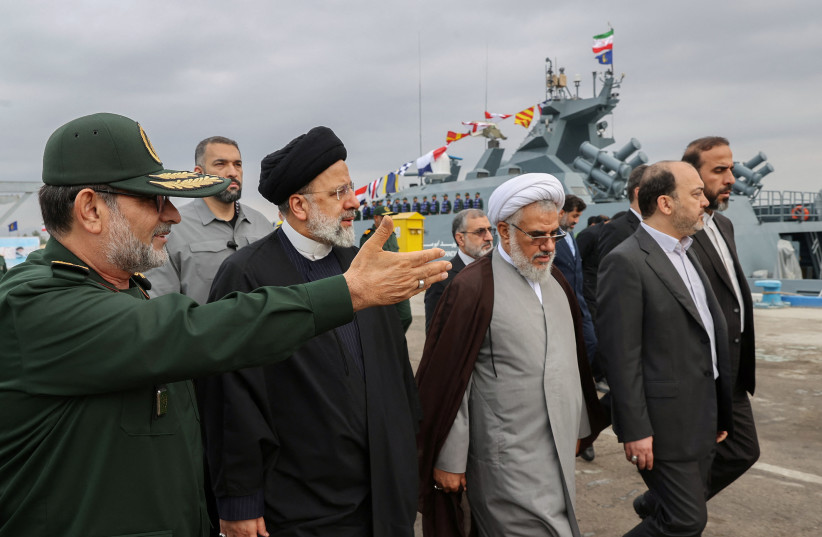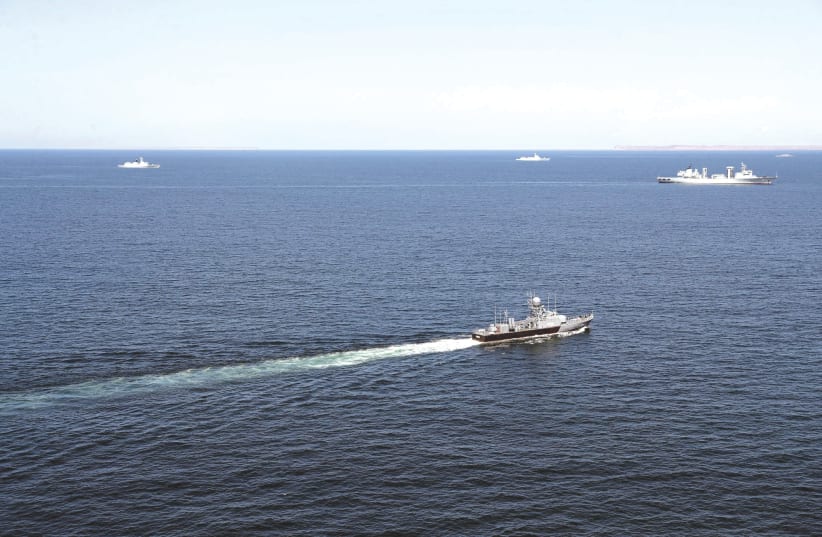In the latest Annual Threat Assessment of the US Intelligence Community, dated February 5, a comprehensive analysis provides insight into the multifaceted threats posed by Iran to US interests, allies, and influence in the Middle East.
This report underscores Iran’s continued endeavors to assert its regional power, leveraging military, diplomatic, nuclear, and sales channels to advance its ambitions. Notably, Tehran’s strategic posture and actions suggest a persistent threat landscape that the United States must navigate with vigilance and strategic acumen.
Iran’s regional and global activities, as delineated in the assessment, highlight a determined effort to entrench its emergent status as a regional power. This is achieved through the orchestration of a broad array of strategies aimed at undermining US influence while minimizing threats to its regime and curtailing the risk of direct military conflict.


The utilization of Iran’s “Axis of Resistance” network, comprising various proxies and partners, underscores a tactical approach to extend its influence and operational reach across the Middle East.
The assessment further details Iran’s tactical leverage gained from recent military successes, diplomatic gains, and the expansion of its nuclear program. This multi-pronged strategy is indicative of Tehran’s intent to bolster ties with key allies, such as Moscow, and to utilize conflicts like the one in Gaza to position itself as a champion of the Palestinian cause. These actions are emblematic of Iran’s broader goal to reshape regional dynamics in its favor, often at the expense of US strategic interests and the stability of its allies.
On the nuclear front, Iran’s activities post-2020 mark a significant pivot from the constraints of the Joint Comprehensive Plan of Action (JCPOA). By expanding its nuclear program and reducing International Atomic Energy Agency (IAEA) oversight, Iran has positioned itself to rapidly advance towards the development of a nuclear device, should it choose to do so. This progression not only challenges non-proliferation norms but also heightens the risk of nuclear escalation in an already volatile region.
Iran's hybrid tactics
Moreover, Iran’s adeptness in hybrid warfare tactics – employing both conventional and unconventional capabilities – poses a continued threat to US and allied military and commercial assets in the region. The proliferation of ballistic missile technology and advancements in unmanned aerial vehicles (UAVs) exemplify Tehran’s commitment to enhancing its military capabilities, thereby complicating the security calculus for the United States and its partners.
The cyber domain represents another arena of contention, with Iran’s growing capability and willingness to conduct aggressive operations against US and allied networks. The intelligence assessment elucidates Tehran’s strategic use of cyber and malign influence operations to undermine US political processes and amplify discord, demonstrating a sophisticated understanding of asymmetric warfare tactics.
Despite these external postures, the regime faces significant internal challenges, including economic underperformance and societal grievances. The persistence of domestic discontent, exacerbated by international sanctions and mismanagement, reveals underlying vulnerabilities that could impact the regime’s stability and decision-making processes.
In light of these revelations from DNI Haines’ testimony before the Senate, it is clear that Iran’s strategy in the region is multifaceted, blending covert operations with support for proxy groups to extend its influence and challenge US interests and allies. The intelligence community’s view that Iran has orchestrated attacks against Israel and US personnel underscores the complex nature of Tehran’s regional engagements – not necessarily exerting direct control over proxy groups but effectively coordinating their activities to serve its strategic objectives.
Furthermore, the persistent support of terrorist groups by Iran, through the provision of weapons, training, and financial resources, stands as a stark reminder of its role as a destabilizing force in the Middle East. Despite the potential for conflict escalation, notably in Gaza, the assessment indicates a strategic restraint aimed at avoiding full-scale war. Additionally, the relationships between Iran and other state actors such as Russia, North Korea, and China are characterized by a pragmatic understanding of mutual benefit, yet constrained by the inherent instability each party brings to the table.
The intelligence community’s assessment regarding the likelihood of interference in the US presidential election by China, Russia, and Iran using advanced technologies further highlights the broad spectrum of threats these state actors pose, extending beyond conventional and regional power dynamics into the realm of influencing democratic processes. These insights from the director of National Intelligence provide a sobering overview of the challenges and complexities the United States faces in navigating the security landscape shaped by Iran’s actions and alliances.
In conclusion, the Annual Threat Assessment of the US Intelligence Community for 2024 paints a stark picture of the threats posed by Iran to US national security. The multifaceted nature of these threats necessitates a comprehensive and nuanced response strategy that addresses the conventional, nuclear, cyber, and geopolitical dimensions of Iran’s actions.
As Tehran continues to assert its influence across the Middle East and beyond, understanding and countering its strategic ambitions remains imperative for safeguarding US national security interests and promoting regional stability.
The writer is a counterterrorism analyst and Middle East studies researcher based in Washington, with a particular focus on Iran and ethnic conflicts in the region. His new book is The Black Shabbat, published in the US. You can follow him at erfanfard.com and on X @EQFARD.
